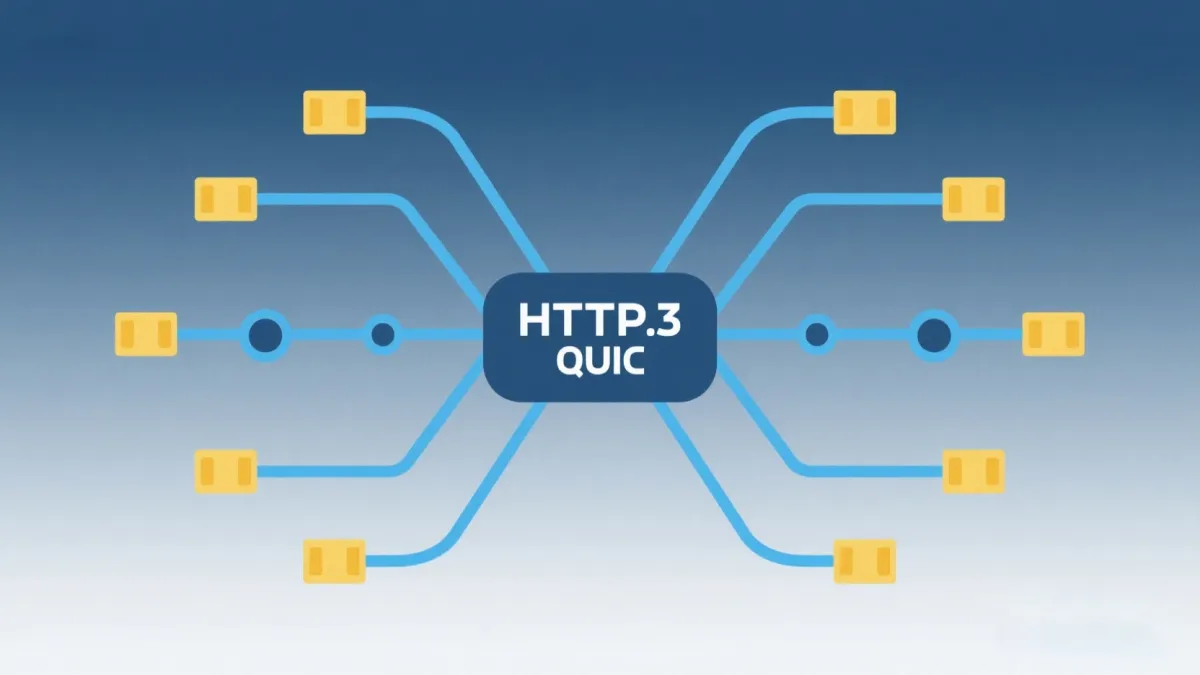
Deep Dive into HTTP/3 and QUIC Protocol
Article Summary
Detailed analysis of HTTP/3 and QUIC protocol technical features and their impact on web performance.
HTTP/3 is the latest version of the HTTP protocol, built on the QUIC transport protocol, offering significant improvements in performance and reliability compared to HTTP/2. This article provides an in-depth analysis of HTTP/3's technical features, including multiplexing, 0-RTT connection establishment, built-in encryption, and explores its application prospects in modern web applications.
Evolution of HTTP
Text-based Protocol
Simple but limited by head-of-line blocking issues
Binary Protocol
Multiplexing over TCP with improved performance
QUIC-based Protocol
Built on QUIC with UDP-based transport
What is QUIC?
QUIC (Quick UDP Internet Connections) is a transport layer protocol developed by Google, now standardized by the IETF. It runs over UDP and provides revolutionary improvements over traditional TCP.
Key QUIC Features
Built-in Encryption
TLS 1.3 is mandatory, providing security by default
Stream Multiplexing
Multiple streams without head-of-line blocking
Connection Migration
Connections survive network changes seamlessly
Fast Connection
0-RTT and 1-RTT handshakes for rapid connections
HTTP/3 Advantages
Reduced Latency
Better Mobile Performance
Enhanced Security
Technical Deep Dive
Stream Multiplexing
HTTP/2 over TCP
HTTP/3 over QUIC
Connection Establishment
HTTP/2 (TCP + TLS)
HTTP/3 (QUIC)
Implementation Considerations
Server Setup
Major web servers now support HTTP/3:
Nginx
Available with nginx-quic module
Apache
Experimental support via mod_h2
Cloudflare
Production support available
Browsers
Chrome/Firefox support enabled
Configuration Example
server {
listen 443 ssl http2;
listen 443 http3 reuseport;
ssl_certificate /path/to/cert.pem;
ssl_certificate_key /path/to/key.pem;
# Add Alt-Svc header for HTTP/3 discovery
add_header alt-svc 'h3=":443"; ma=86400';
}Current Adoption
Browser Support
Chrome
Full support (enabled by default)
Firefox
Full support (enabled by default)
Safari
Experimental support
Edge
Full support
CDN Support
Cloudflare
Production ready with global rollout
Fastly
Beta support with limited availability
Amazon CloudFront
In development phase
Google Cloud CDN
Available for testing
Performance Impact
Real-world Improvements
Future Outlook
HTTP/3 is becoming the standard for modern web applications. Key trends:
Widespread Adoption
Major platforms and services are migrating to HTTP/3
IoT Applications
Ideal for resource-constrained devices and edge computing
Real-time Applications
Better performance for streaming, gaming, and interactive apps
Mobile-first
Optimized for mobile network conditions and constraints
Conclusion
HTTP/3 represents a significant advancement in web protocol technology. Its QUIC foundation addresses fundamental limitations of TCP-based protocols, offering improved performance, security, and reliability. As adoption grows, developers should prepare for migration and optimization of applications to leverage these benefits.
HTTP/3 Migration Checklist:
- ✅ Evaluate current infrastructure compatibility
- ✅ Update server configurations for HTTP/3 support
- ✅ Implement proper fallback mechanisms
- ✅ Monitor performance metrics and user experience
- ✅ Plan gradual rollout strategy
- ✅ Train development team on QUIC concepts